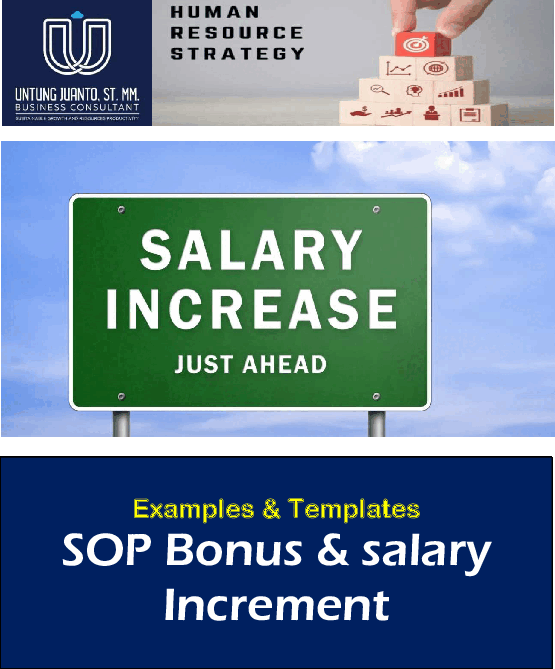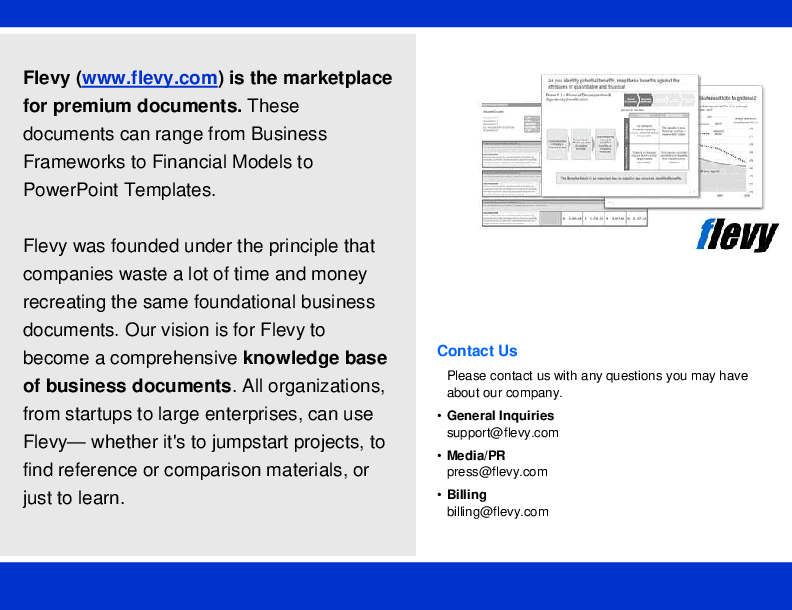SOP Bonus & Salary Increment (Examples & Templates) (Word DOCX)
Word (DOCX) 6 Pages
BENEFITS OF THIS WORD DOCUMENT
- Provides of Policy & Procedures of SOP Bonus & salary Increment
- Provides of Flowchart of SOP Bonus & salary Increment
- Employee Salary Increment Parameters Form & Employee Bonus Parameters Form
COMPENSATION WORD DESCRIPTION
SOP Bonus & salary Increment (Examples & Templates)
Contents
1. Policy of SOP Bonus & salary Increment
2, Procedures of SOP Bonus & salary Increment
3. Flowchart of SOP Bonus & salary Increment
4. Employee Salary Increment Parameters Form
5. Employee Bonus Parameters Form
An increment or a bonus is undoubtedly a mood booster. Whether it leads to employees improving their performance is another matter. However, if handled well, extra money can definitely boost one's personal finances.
Consistent, fair, and streamlined bonus and compensation processes can make a big impact on employee engagement and turnover rates. Because if your people don't feel comfortable asking you for proper compensation, they're more likely to quit and start a new job that offers a more competitive salary.
A salary increment is an increase in an employee's annual pay in the form of a percentage. Individuals use this percentage as a reference point when negotiating pay increases, while employers utilize salary increments to give yearly raises more fairly and easily. A salary increment system helps make the compensation process more consistent, standardized, and scalable for companies.
Employers may award salary increases for exceptional performance, to correct internal salary inconsistencies, bring employees' pay up to current market standards or retain a particularly valuable or hard-to-replace employee. Employers generally expect that a salary increase will encourage the employee to be more productive, thereby covering much of the cost of the pay raise.
Bonus is an extra pay and sometimes it's a statutory payment made out of profits of a company. Sometimes bonus may also linked with companie's performance and employee performance in order to distribute in most appropriate way. Most bonuses are linked to performance. Profit-sharing and gain-sharing bonuses reward employees for their efforts to boost company profits or meet improvement targets. They typically are paid across the board to all employees or to everyone in a particular department or business unit. Spot bonuses reward individual employees for achievements that deserve special recognition. Task bonuses go to individuals or teams that complete important projects on time and within budget.
A bonus and a salary increase both represent an increase in an employee's compensation. The difference between them is that a bonus is a one-time payment, while a salary increase is a permanent change in compensation, putting more money in the employee's pocket every payday for the entire duration of his employment.
Regards,
UJ Consulting
This Word document provides a clear breakdown of salary increments based on final performance scores, ensuring transparency and fairness in compensation adjustments. The HR department's role in communicating and implementing these policies is also outlined, emphasizing the importance of proper execution.
Got a question about the product? Email us at support@flevy.com or ask the author directly by using the "Ask the Author a Question" form. If you cannot view the preview above this document description, go here to view the large preview instead.
Source: Best Practices in Compensation Word: SOP Bonus & Salary Increment (Examples & Templates) Word (DOCX) Document, UJ Consulting
This document is available as part of the following discounted bundle(s):
Save %!
Complete SOP Retention Management (RM)
This bundle contains 10 total documents. See all the documents to the right.
Save %!
Complete SOP Compensation and Benefit Management (CBM)
This bundle contains 5 total documents. See all the documents to the right.
Save %!
Complete SOP Human Resource Management (HRM)
This bundle contains 26 total documents. See all the documents to the right.
Save %!
Become a HR Retention Strategy Expert
This bundle contains 9 total documents. See all the documents to the right.




